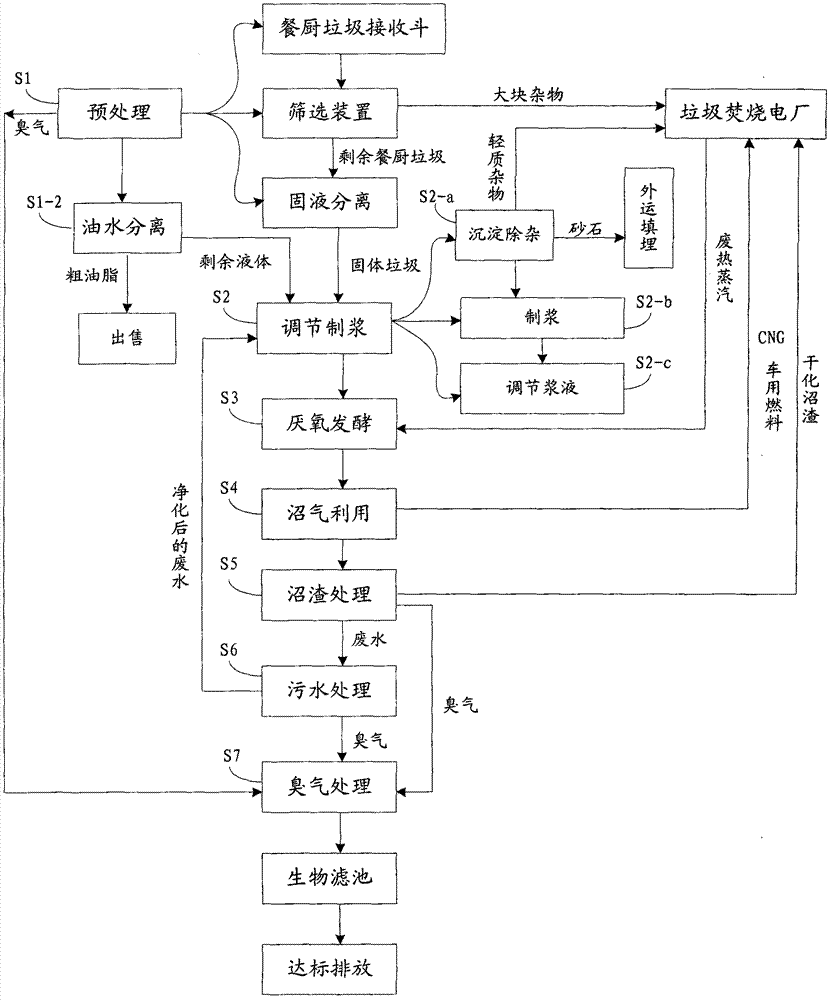Kitchen waste collaborative processing method
A food waste and collaborative processing technology, applied in the direction of solid waste removal, etc., can solve the problems of complex biogas residue processing methods, high energy consumption, and high processing costs, so as to improve the utilization efficiency of biogas resources, realize recycling, reduce The effect of investment costs
- Summary
- Abstract
- Description
- Claims
- Application Information
AI Technical Summary
Problems solved by technology
Method used
Image
Examples
Embodiment Construction
[0032] In order to make the purpose, technical solution and advantages of the present invention more clear, the method for co-processing food waste of the present invention will be further described in detail below in conjunction with the accompanying drawings and embodiments. It should be understood that the specific embodiments described here are only used to explain the present invention, not to limit the present invention.
[0033] Such as figure 1 As shown, the collaborative processing method of kitchen waste of the present invention comprises the following steps:
[0034] Step S1, pretreatment: unload the food waste into the receiving hopper, and transport the food waste to the screening device through the conveying device at the bottom of the receiving hopper to separate the large pieces of debris; then send the large pieces of debris to The waste incineration power plant is used for incineration to generate electricity; the screened food waste is transported into the ...
PUM
 Login to View More
Login to View More Abstract
Description
Claims
Application Information
 Login to View More
Login to View More - R&D
- Intellectual Property
- Life Sciences
- Materials
- Tech Scout
- Unparalleled Data Quality
- Higher Quality Content
- 60% Fewer Hallucinations
Browse by: Latest US Patents, China's latest patents, Technical Efficacy Thesaurus, Application Domain, Technology Topic, Popular Technical Reports.
© 2025 PatSnap. All rights reserved.Legal|Privacy policy|Modern Slavery Act Transparency Statement|Sitemap|About US| Contact US: help@patsnap.com

